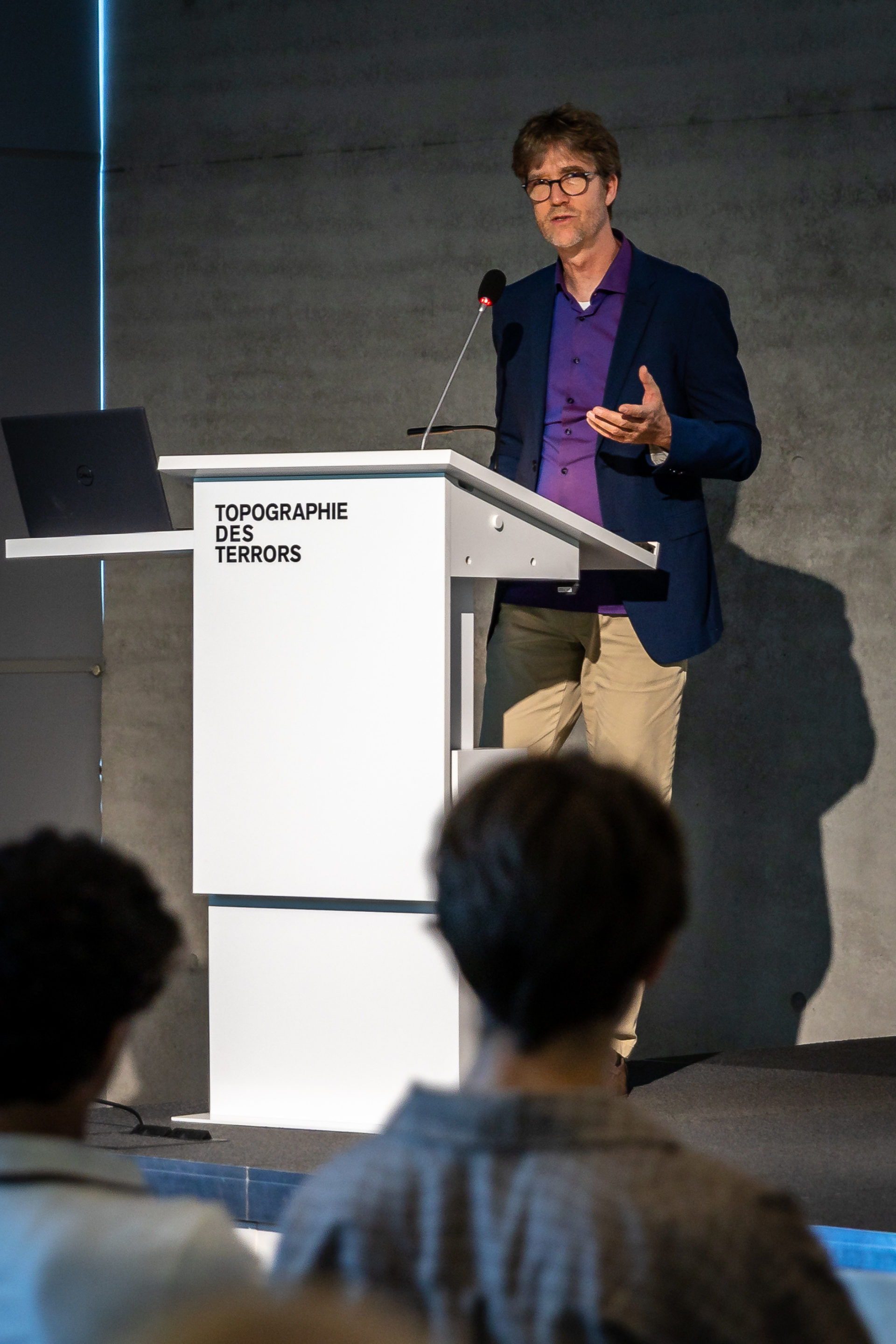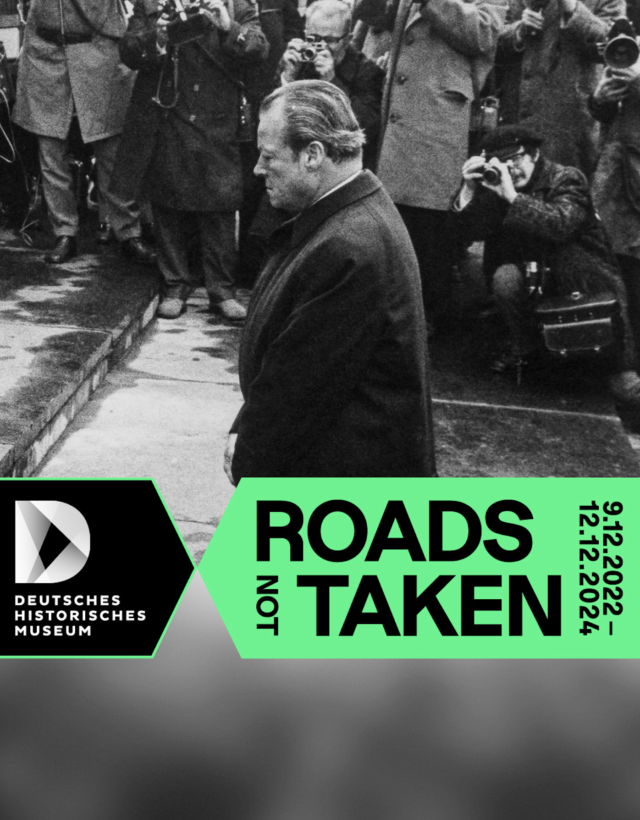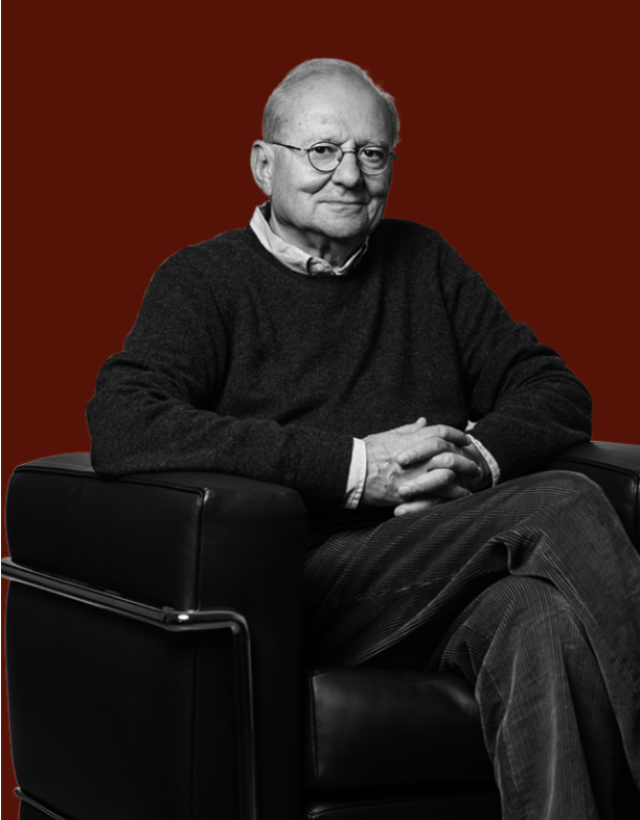
In this interview, Dr Mathias Rösch, curator and director of the School Museum, discusses the importance of multiple perspectives in developing the exhibition and explains why young people in particular can bring new energy and insight to remembrance culture.
How did the idea for the exhibition The Nazis Didn’t Just Disappear come about?
Matthias Rösch: In our museum’s educational work, we’ve seen growing interest among students of all school types in how Germany dealt with National Socialism after 1945. The rise of right-wing extremism and populism, along with a gradual shift in Germany’s remembrance culture, gave us further reason to consider an exhibition aimed particularly at young people.
The final spark came during preparations for our earlier exhibition on the student revolt in West Germany in the 1960s. In over 20 preliminary eyewitness interviews, there was constant reference to post-1945 tensions—within families, within schools—about how to deal with the Nazi past. The psychological weight of that legacy came up again and again.
What makes this exhibition unique? How does it differ from other exhibitions on National Socialism and the post-war era?
MR: The exhibition is specifically designed to reach young people—regardless of their cultural or social background. It brings two main perspectives to the fore: the voices of young people in the years after 1945 (the grandparents or parents of today’s generation), and those of survivors from Nazi-occupied regions (which can offer entry points for visitors with migration backgrounds). It also makes use of a rarely explored source type in exhibitions: school-related objects. These are presented alongside large-scale illustrations.
Finally, the exhibition confronts how profoundly Nazi crimes shaped society long after 1945—especially for survivors and their descendants, but also for the children and grandchildren of perpetrators and bystanders. This helps make the monstrousness of the Nazi dictatorship tangible—and underlines the importance of an open, critically reflective engagement with that past.
Were there any particular challenges in developing the exhibition? How did you address them?
MR: The biggest challenge was complexity. How do you show the vastly different developments in East and West Germany, while distinguishing between the diverging perspectives of and in politics, society, families, victims, and perpetrators—and also include the views of young people today? And how do you do all that within 200 square metres?
To find entry points that would resonate with both young people and adults, we turned to school-related artefacts—an unusual but effective approach. A bigger difficulty was finding objects that could convey something as abstract as silence. And in any case, over the eight decades since 1945, it seems most families have disposed of nearly all documents tied to their own internal culture of remembrance.
What role did students play in shaping the exhibition?
MR: The exhibition is a joint production of the Nuremberg School Museum at Friedrich-Alexander University Erlangen-Nuremberg (FAU) and the FAU Office for Collections and Museums. It was developed together with students from four federal states—including Berlin-Spandau’s Kant Gymnasium High School—and is aimed especially at a young audience. The students chose most of the themes and selected a large portion of the objects. The core questions and many key presentation ideas also emerged through collaborative development workshops.
What did you learn from the students’ perspective about how history and memory are dealt with today?
MR: One of the greatest insights came through the students’ questions—and sometimes provocations. For example, more than once they put forward the idea that perhaps the Nazi perpetrators had been “harmless” after 1945, and so there was no real reason to “lock them up.” This prompted the exhibition team to examine more closely how former Nazis remained active in the post-war period, and to address this part of the story in greater depth.
What do you hope visitors take away from the exhibition?
MR: I hope they come away with an understanding of the positive potential of open, critical reflection on the Nazi past. Far from overburdening families, this kind of engagement can actually strengthen relationships—encouraging attentiveness and care within families. Likewise, it can foster a deeper respect for human rights and a lasting sense of democratic responsibility.
The touring exhibition will be on display at the Topography of Terror Documentation Centre in Berlin from 2 July 2025 to 11 January 2026. Subsequent venues include the Museum of Communication in Frankfurt am Main in January 2026 and the Documentation Centre Nazi Party Rally Grounds in Nuremberg in autumn 2026.


